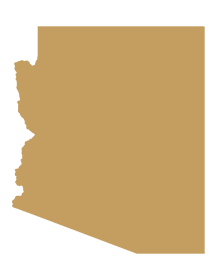Jenna LeveilleDeputy State Cartographer, Arizona State Land Departments
Interviewed by Scott Bennett | March 17, 2020 Arizona Deputy State Cartographer Jenna Leveille has been working in GIS for about 20 years with 15 years of that in state government and in her current role for a little over two years. She first learned about GIS as an intern while getting her bachelor’s from Oregon State University. Leveille imagined she would work in wildlife conservation but a chance opportunity brought her to state government. She found a love and passion for GIS that has kept her engaged and committed to serving Arizona. In the past two years in her role, Leveille has seen a significant increase in collaboration and involvement in the state GIS coordinating council. Partners from all levels of government and the private sector are collaborating to solve common problems. There is a community effort to reduce duplicative efforts, to network to better understand challenges and find solutions, and to volunteer time to benefit each other and the community as a whole. Leveille related a success story about addressing and NG911 in Arizona. Arizona had its first county migrate to geospatial call routing in early 2019, she said. Other counties are quickly following. It is exciting to see the early adoption and success. Lidar acquisition is also becoming one of the greatest successes for Arizona. In a very short time, Arizona has made significant progress towards statewide coverage. The Arizona Geographic Information Council (AGIC) has also blossomed in the past few years. The group has increased its committee size from five to 17 in a very short time. “The GIS community is connected and getting great work done”, said Leveille. Leveille also recognized the efforts of Mark Christiano, Kaibab National Forest GIS Coordinator, who is the champion of state-wide lidar efforts in Arizona. He is the Co-Chair for the AGIC Lidar work group and has been critical in helping to coordinate both technical value and funding. The AGIC Lidar work group educates stakeholders on the benefits of lidar, leveraging the 3DEP program and helps to coordinate networking opportunities for cost sharing. Because of Mark’s contribution, the lidar footprint in Arizona has increased significantly and Arizona has a Lidar Acquisition Plan. Beyond funding, the visibility of GIS continues to be the state’s greatest GIS challenge, said Leveille. “Educating executives on the benefits of GIS and statewide coordination is vital and challenging.” Currently, GIS coordination is largely a volunteer effort in Arizona. She went on to say that it would help considerably to have support from the top leaders. Another challenge is engaging rural and tribal communities. Their team is currently working on a centralized platform to provide access to GIS tools and training for anyone in Arizona. “We are hopeful that rural and underserved communities will benefit”, said Leveille. There is currently no statewide level program in place for imagery. Leveile said, “We currently leverage NAIP (60cm) which has traditionally been collected every two years.” Individual counties and cities have some coordination to obtain higher-resolution. With NAIP potentially becoming a subscription based service, Arizona is beginning to explore alternatives and options for a state imagery program. One challenge is the need for something to be available in the public domain. Many users have become dependent on the free resource. She shared that their council and committees are addressing the spatial framework needs of the state. “We have strong coordination for statewide roads and addresses that feed up to the national framework, we are working towards a state hydrology effort. We have a state geospatial clearinghouse that we are currently modernizing.” Part of that effort has included coordination with academic partners and community stakeholders to make AZGeo the one-stop shop for authoritative geospatial data in Arizona. Leveille is most excited about the prospects of lidar for Arizona. She feels that having lidar and its derivative products will be incredibly beneficial to their state. She is also intrigued by autonomous and unmanned vehicles. Several groups in Arizona that are doing great work in that area. Having a NSGIC liaison is part of the state statutes that govern Arizona’s GIS coordinating council and Leveille was appointed to fill that role. “I think it is one of the best mandates we have. I am grateful for the opportunity. It helps immensely in state coordination efforts to connect with other states to share resources, knowledge, and experiences,” shared Leveille. When it comes to what she enjoys most about her job as Arizona Deputy State Cartographer, Leveille immediately pointed to the people. She loves the relationships she has formed that serve their GIS community. Second to the relationships, she finds the diversity of subject matter to be engaging and rewarding. She is a big picture person and loves to see the many connections. On a personal note, she likes photography (especially landscape) and she has even put books together that have sold. She also is a quilter and loves the creative development involved in making a new quilt. She loves her little dogs and new husband and enjoys traveling when she can. Whatever she is doing, she loves to “collect experiences” – whether camping or learning something new. To learn more about GIS in Arizona, visit the Arizona Geospatial Clearinghouse (AZGeo).
Read more State Spotlights
|


 State Spotlight: Arizona
State Spotlight: Arizona